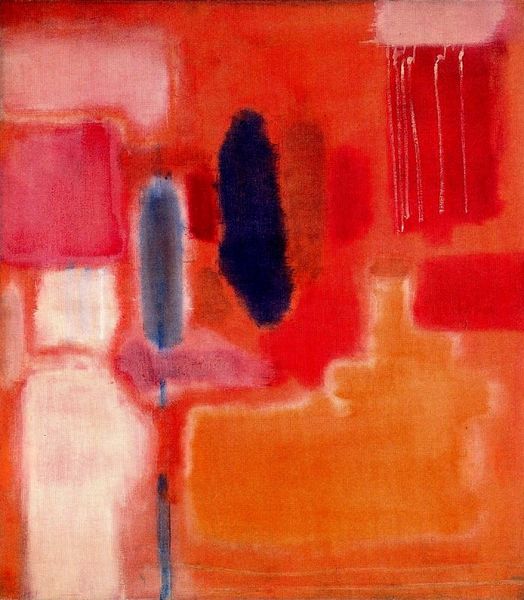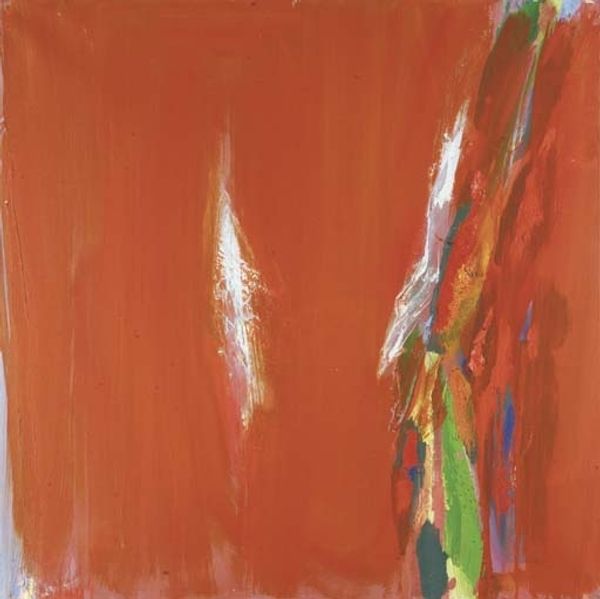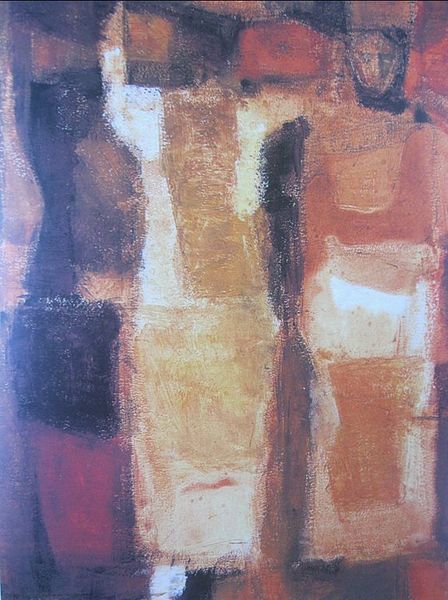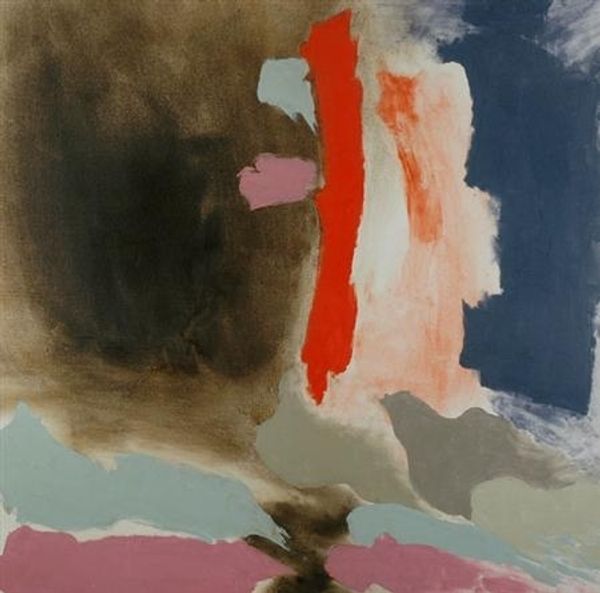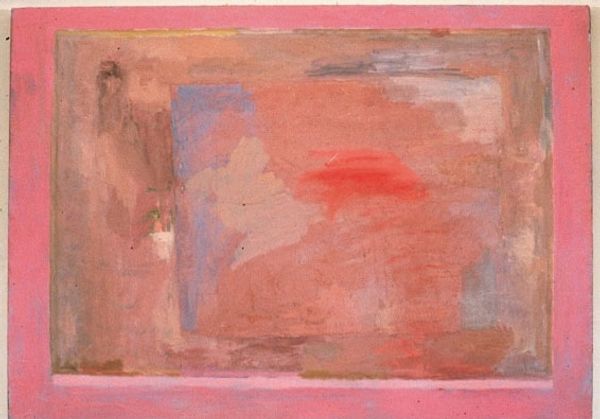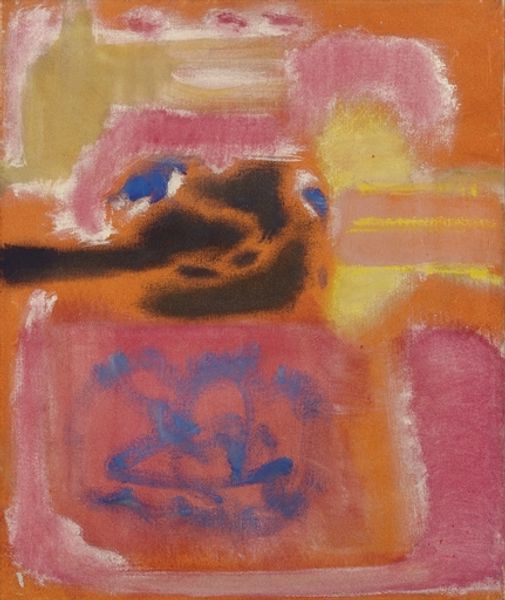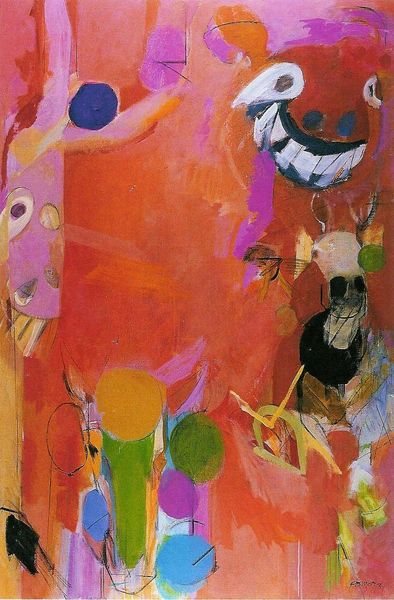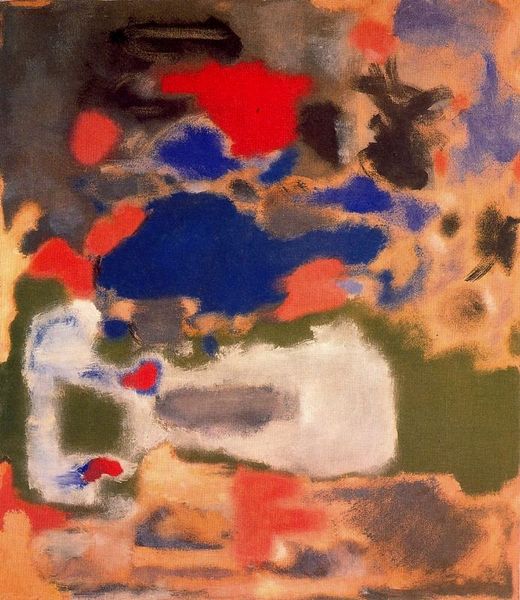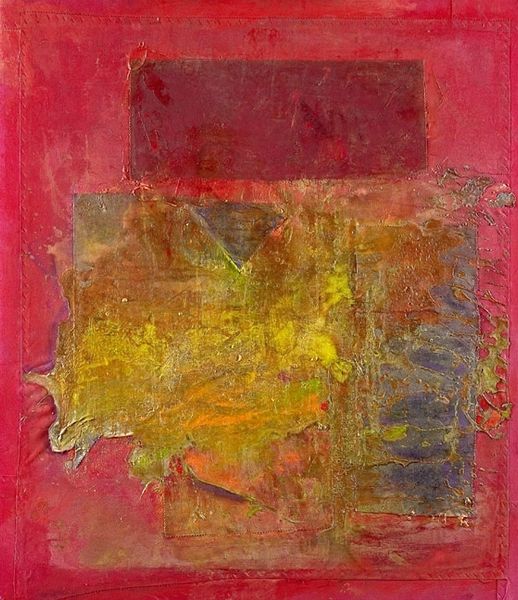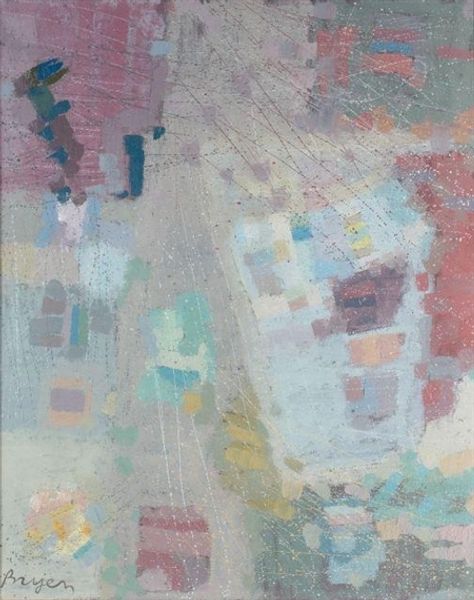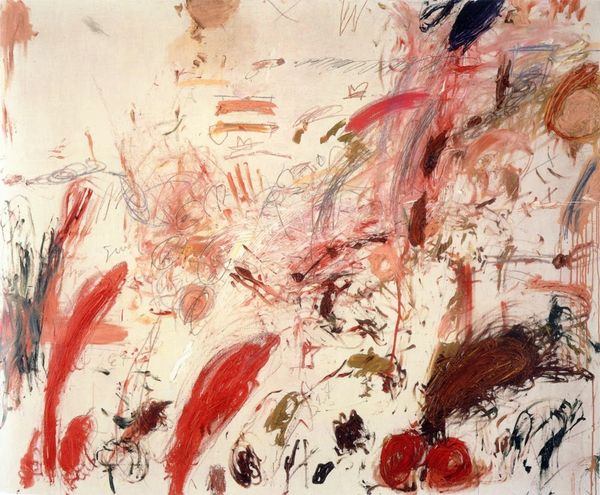
acrylic-paint
#
abstract-expressionism
#
abstract expressionism
#
acrylic
#
abstract painting
#
acrylic-paint
#
abstract-art
#
abstraction
#
abstract art
#
modernism
Copyright: Mark Rothko,Fair Use
Curator: Standing here before Mark Rothko’s “No. 1” from 1949, executed in acrylic, I'm immediately struck by its simmering energy. Editor: Yes, there’s a real intensity, isn't there? A sort of internal combustion. All that fiery red seems to bleed into something darker. Curator: Absolutely. Looking at Rothko through a contemporary lens, particularly considering his personal history as a Jewish immigrant fleeing persecution, I see these intense colors, and these blurry blocks as embodying feelings of displacement and existential angst, a searching for meaning within chaos. The redness in the blocks speaks of raw emotion, maybe even suppressed anger, especially juxtaposed with those muddier areas. Editor: I agree there is rawness, and I can definitely see those connections between his biography and his work, however the evolution toward these non-representational forms in the late 1940s happened within the context of abstract expressionism, a movement grappling with post-war anxieties. There was an attempt at creating a universal visual language to respond to the psychological trauma after the war. Thinkers, like Clement Greenberg, really shaped the interpretation of such pieces. Curator: Context matters! Rothko moved away from overt figuration, attempting to represent human emotions on a more profound level and break the canons he knew until that point. These seemingly simple fields of color encourage subjective interpretations, they invite each viewer to project their experiences and understandings onto the artwork. How are we engaging and making sense of Rothko's exploration of the emotional consequences of displacement? Editor: Fair point. And regardless of background or trauma, those fields of color absolutely demand emotional engagement, which goes a long way to explain its lasting legacy in the public eye. Curator: His exploration serves as a crucial starting point in decolonizing not only the form but the meaning, emphasizing art as something fluid and alive. Editor: I suppose, ultimately, Rothko created art to transcend those barriers, art for a modern, uncertain world. Curator: A fitting reflection to close on.
Comments
No comments
Be the first to comment and join the conversation on the ultimate creative platform.

